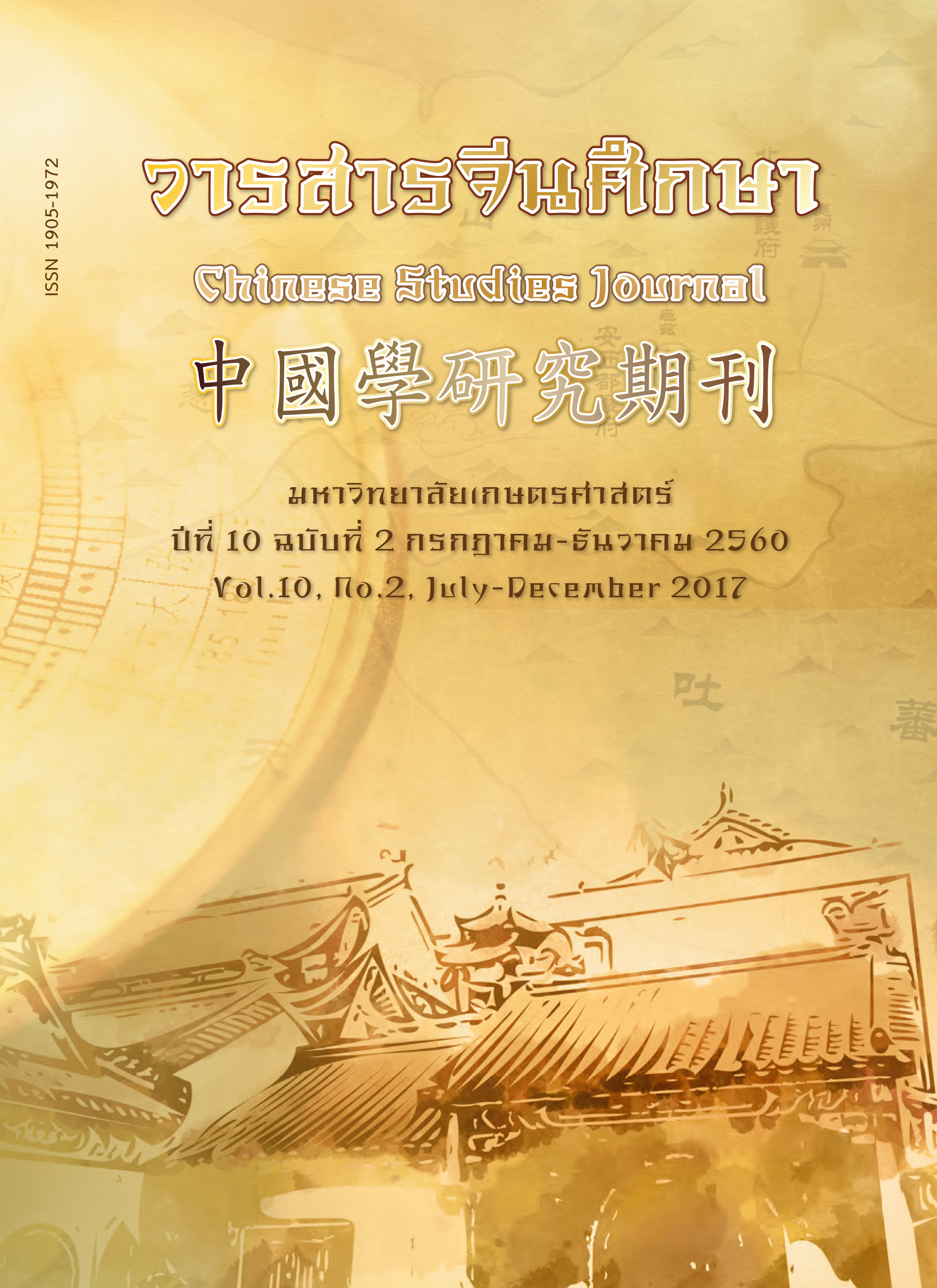Differences in usage of cultural language between Taiwan's and Hong Kong's Metro advertisement
Main Article Content
Abstract
Historically, national culture changes and evolves through time. The variations can be best reflected from major communication sources, such as the language usage in metro advertisement. Represent of national concepts, beliefs and cultures can also be understand and interpret from this. The data used for analysis in this essay are gathered between February and May 2015. A total of 51 advertisements are gathered from Hong Kong's metro, and 31 from Taipei's metro. The analysis of Hong Kong's metro corpora are grouped into 'Foreign language applications', 'Cantonese Chinese', 'Ancient Chinese' and 'Beautiful Rhetoric'. On the other hand the Taipei's corpora are grouped into 'Mixed of foreign language', 'Taiwanese-style Chinese', 'Beautiful Rhetoric' and 'Rhythm and Rhyme'.
Advertisement language, as a form of art, can reflect the differences between cultures, languages and society developments. The advertisements in Hong Kong show frequent usage of verbal languages and commercial languages. The Cantonese corpora also reflect the cultural preservation of ancient Chinese. On the other hand, advertisements in Taipei's metro tend to use large amount of rhetoric, showing the vividness and creativeness of Taiwanese culture. Both sets of corpora also show the application of foreign languages embedded into local languages, which is an interesting phenomenon. Advertisements found in metro for Taipei and Hong Kong both showcases their own uniqueness in cultural languages.
Article Details
ผลงานทางวิชาการที่ลงตีพิมพ์ในวารสารจีนศึกษา มหาวิทยาลัยเกษตรศาสตร์ เป็นลิขสิทธิ์ของผู้เขียนหรือผู้แปลผลงานนั้น หากนำลงในวารสารจีนศึกษาเป็นครั้งแรก เจ้าของผลงานสามารถนำไปตีพิมพ์ซ้ำในวารสารหรือหนังสืออื่นได้โดยมิต้องแจ้งให้ทราบล่วงหน้า แต่หากผลงานที่ได้รับพิจารณานำลงในวารสารจีนศึกษา เป็นผลงานที่เคยตีพิมพ์ที่อื่นมาก่อนเจ้าของผลงานต้องจัดการเรื่องปัญหาลิขสิทธิ์กับแหล่งพิมพ์แรกเอง หากเกิดปัญหาทางกฎหมาย ถือว่าไม่อยู่ในความรับผิดชอบของวารสารจีนศึกษา มหาวิทยาลัยเกษตรศาสตร์ ทั้งนี้ ความคิดเห็นต่างๆ ในบทความเป็นความคิดเห็นส่วนตัวของผู้เขียน ไม่เกี่ยวกับกองบรรณาธิการวารสารจีนศึกษา มหาวิทยาลัยเกษตรศาสตร์


